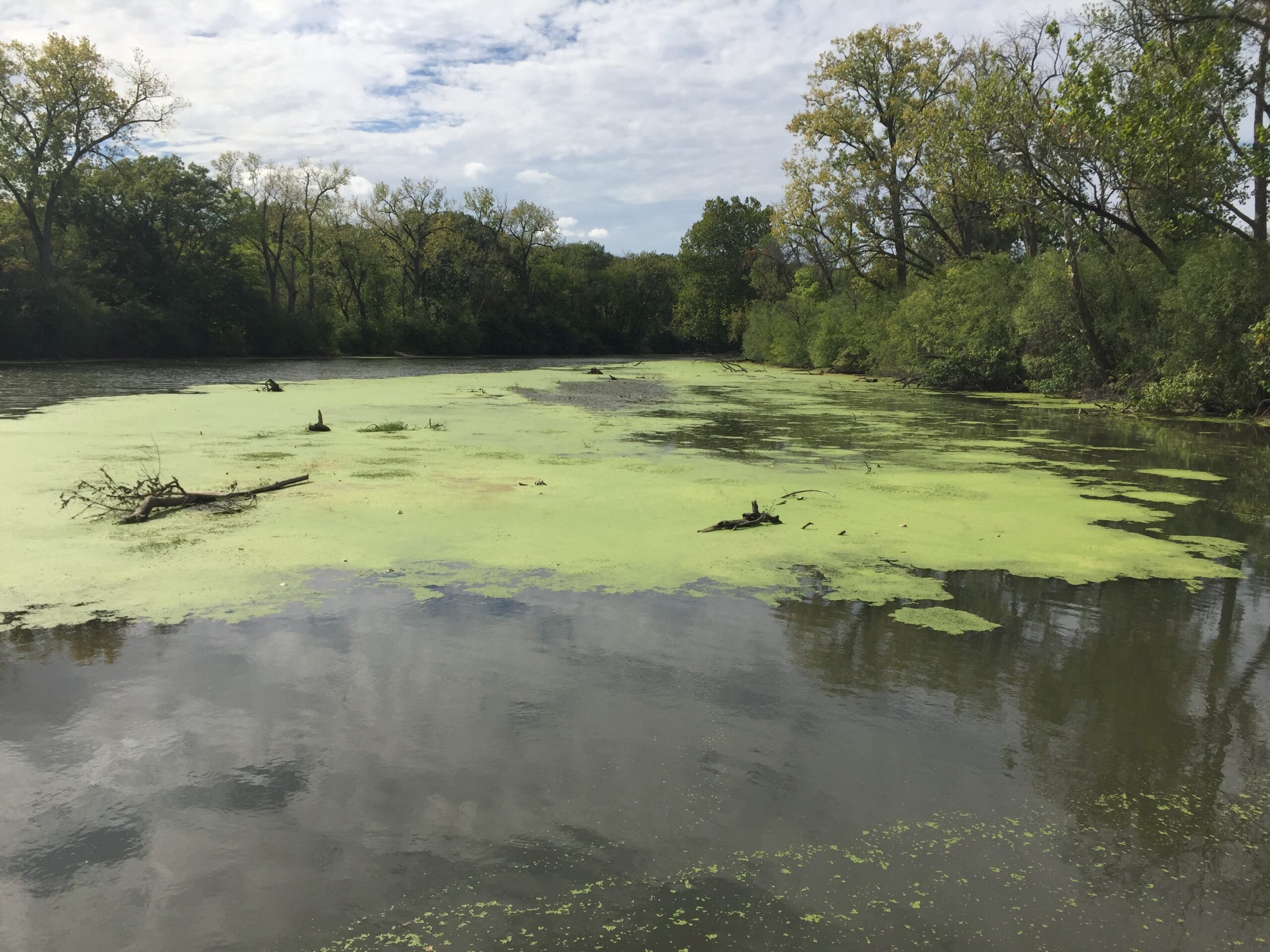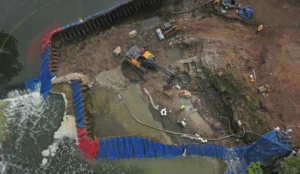Although there are many factors impacting urban stream systems from pollution to stormwater runoff to structures in the floodplains, dams create a host of problems for stream systems everywhere.
What Did the Fish Say When It Swam Into the Wall?
First and foremost, dams fragment stream systems preventing fish from freely move upstream. Even a low-head dam can create a barrier to our Midwestern fish, that unlike salmon are not built to jump any significant height. These barriers block access to spawning areas where appropriate egg laying habitat may be found and young fish have a better chance of survival. Fresh water mussels are also impacted as they rely on fish in the early part of their life cycle to transport baby mussels to upstream areas.

Pools Behind a Dam Cause Problems for Aquatic Life
The pooled areas created behind a dam impact water quality and habitat. During warmer months with lower stream flows, water behind dams can become stagnant and harbor algal blooms. Slow flow and greater surface area increases the water temperature. Warmer water can’t hold as much dissolved oxygen. Sometimes oxygen levels fall well below what fish and insects need to survive.
Also, a free-flowing stream moves sediment. When the water slows down behind a dam, the sediment drops and covers important bottom habitat that fish and aquatic insects use for feeding or breeding.


Dams Cause Problems for People Too
In addition to these environmental issues, many dams in our region also pose safety hazards and have been responsible for many drownings over the years. Dams also impact recreational opportunities like canoeing and kayaking, requiring paddlers to portage around them.
Most Dams are Obsolete
So why are there dams on our rivers and streams? Do they serve a purpose? Many dams were originally built to run grist or saw mills as settlers moved in, many more were built in the 1930’s by the Civilian Conservation Corps to create recreational areas. Most of these dams no longer serve any purpose. There are some dams in the region that do serve as flood control structures, generate electricity or are barriers to invasive fish species like the Asian Carp.
Restoring Healthy Rivers and Streams
As we look to restore and protect the health of our local streams, one of the most cost-effective projects we can do is to remove or modify dams. In one move, dam removal allows fish passage, improves dissolved oxygen levels, restores habitat and creates safe passage for paddlers. There have been several successful dam removal projects across northeastern Illinois, opening up hundreds of miles of free flowing streams.






